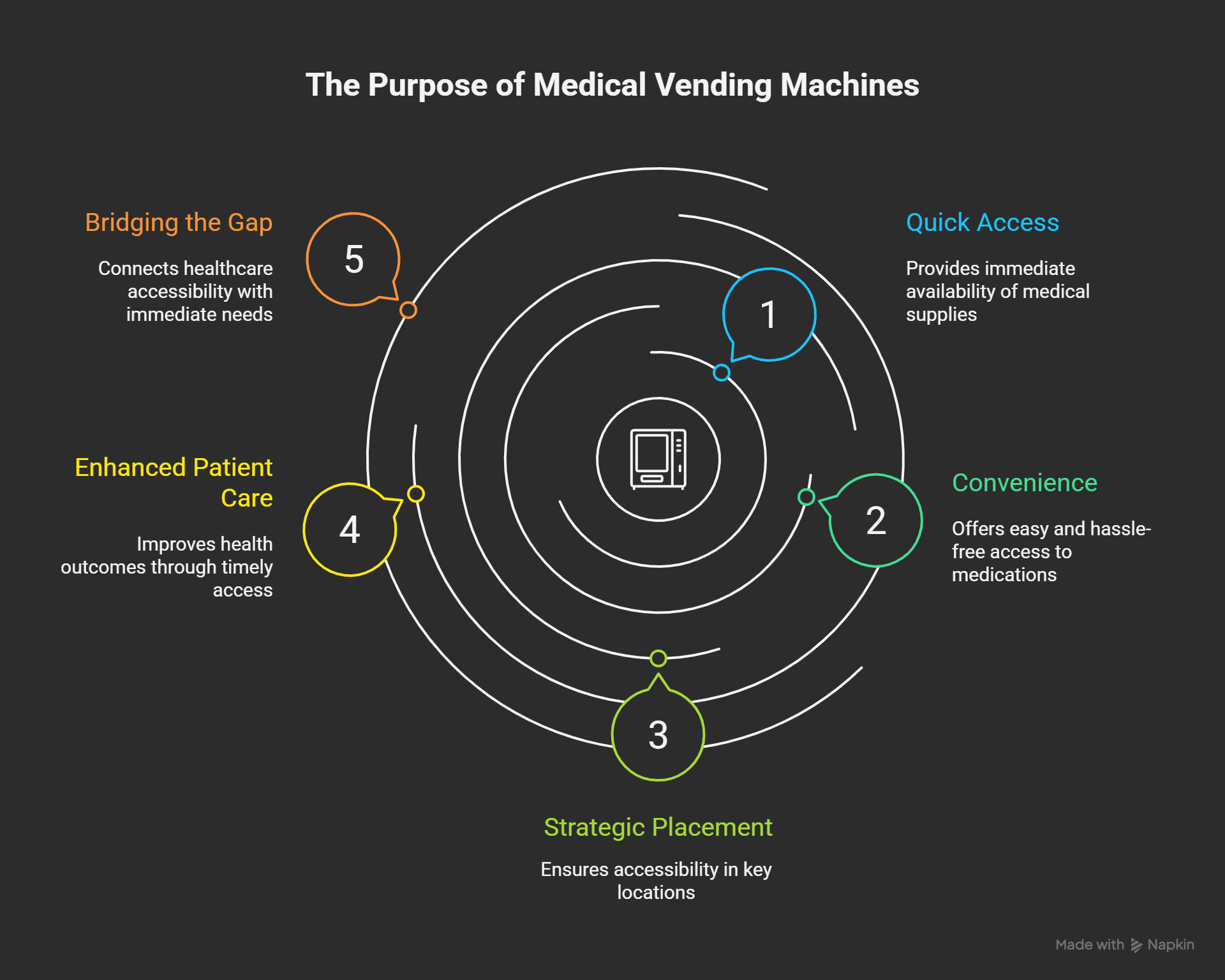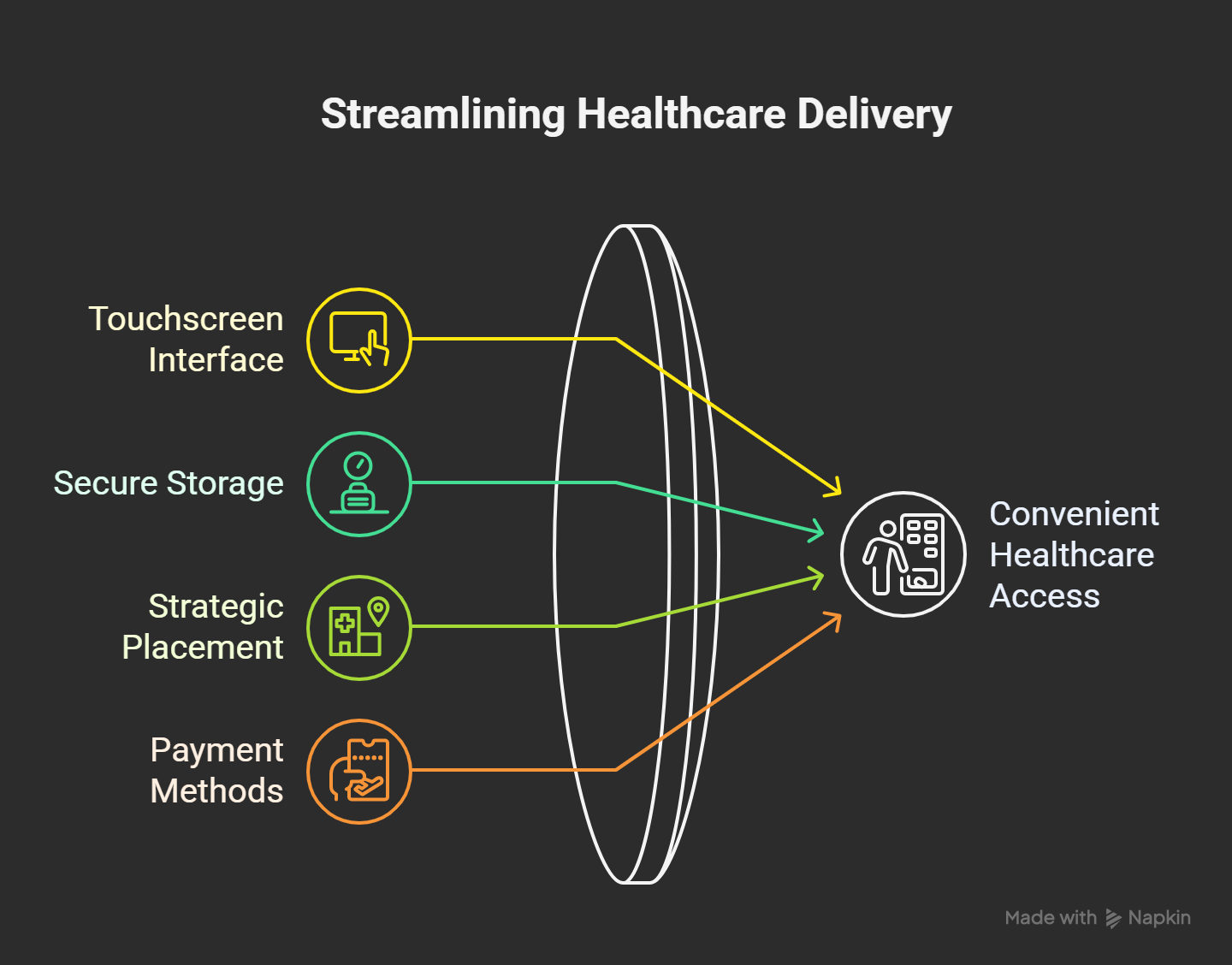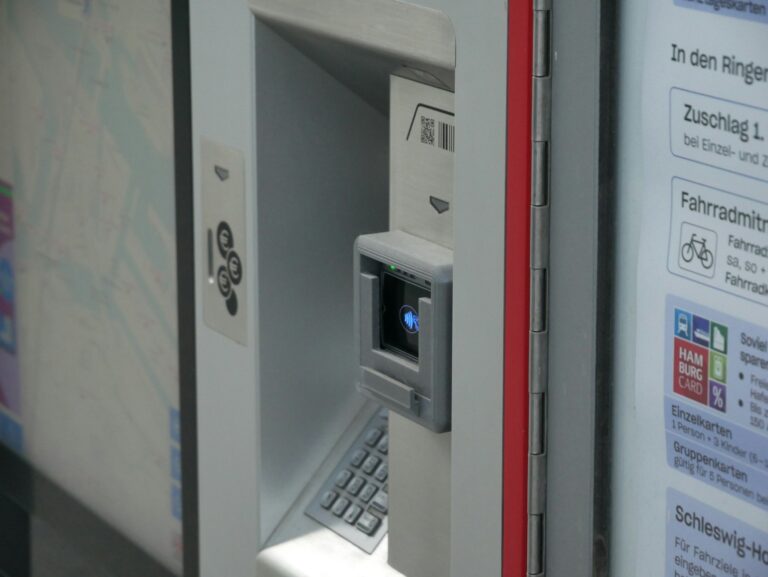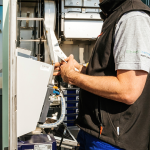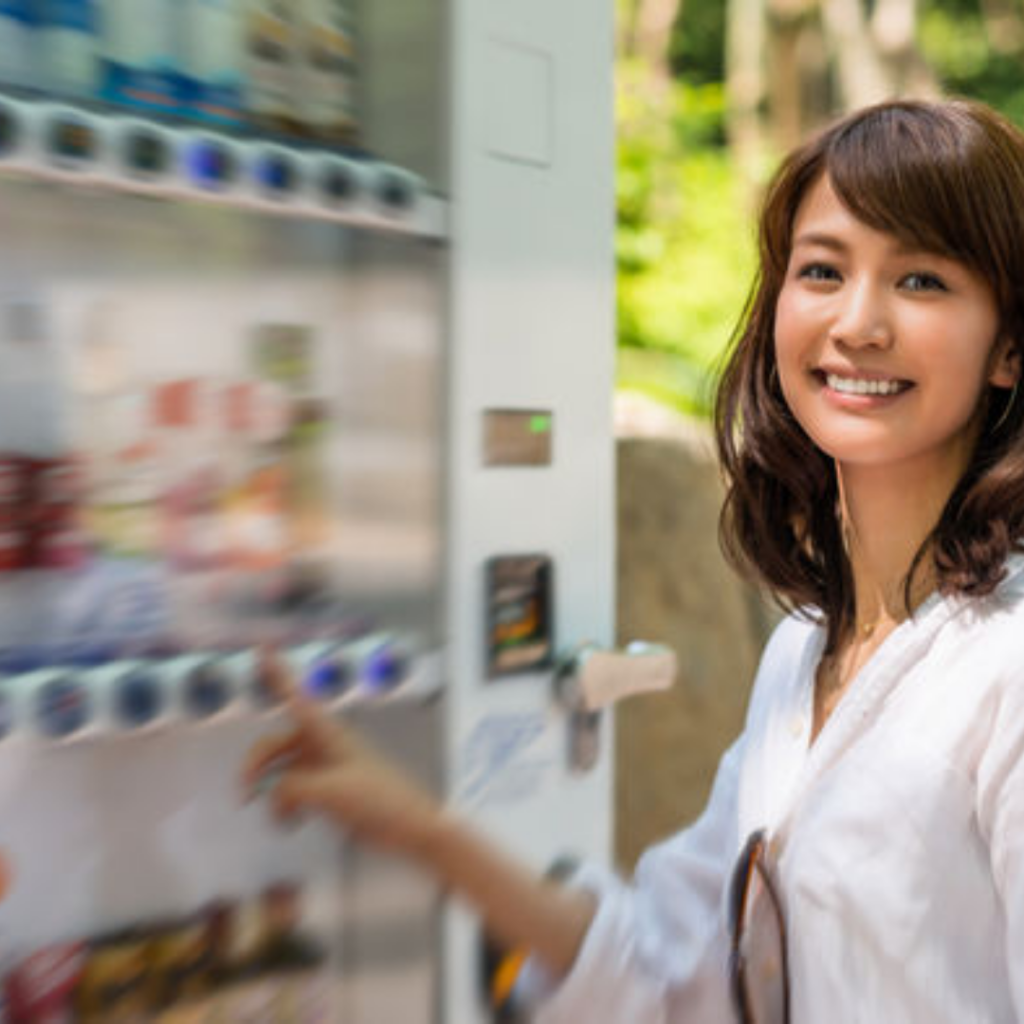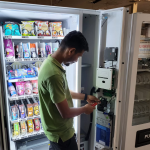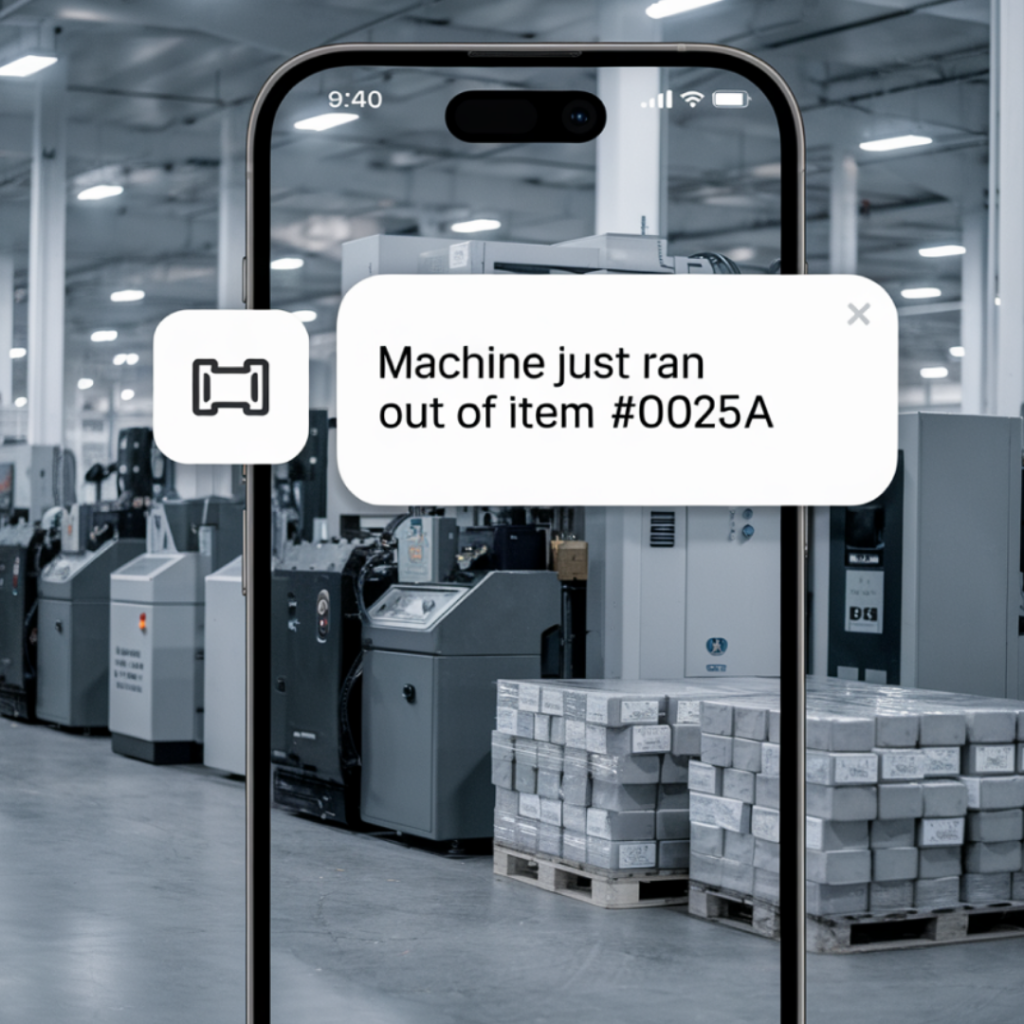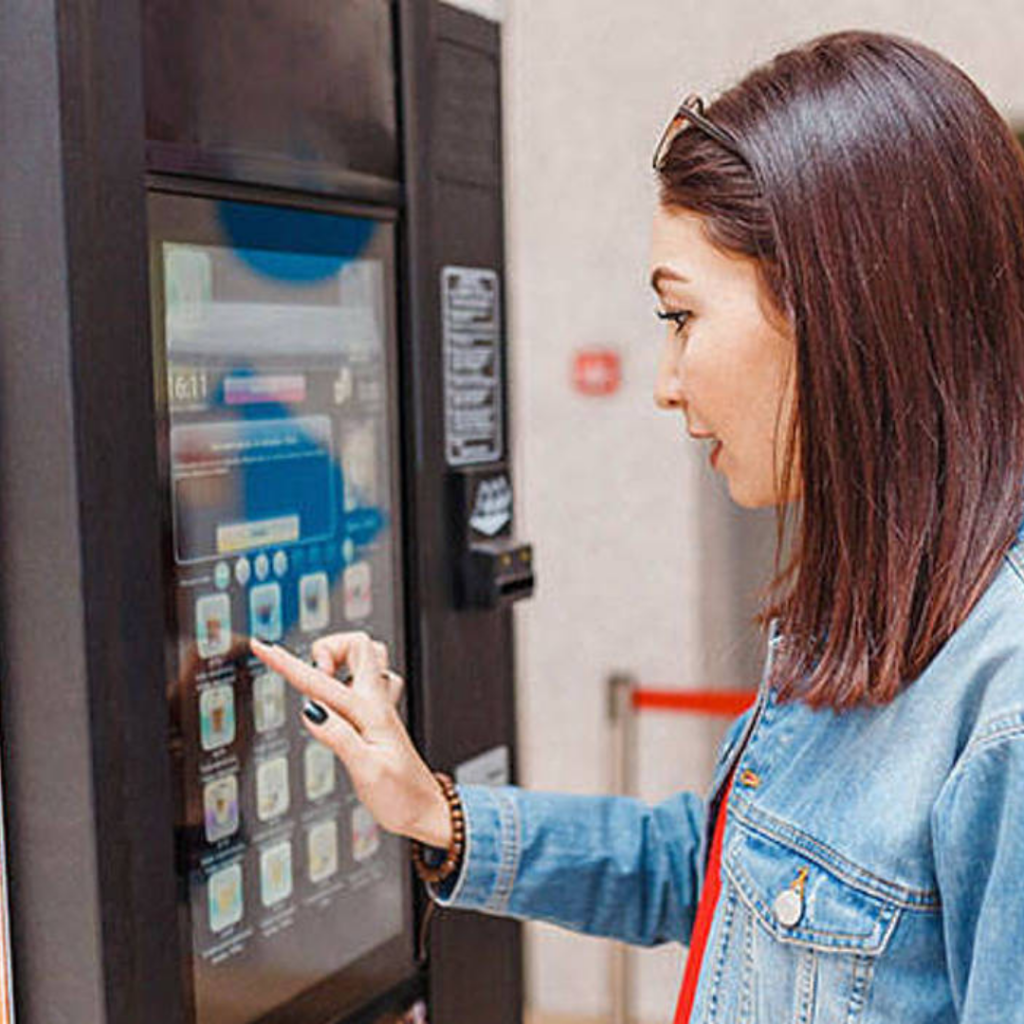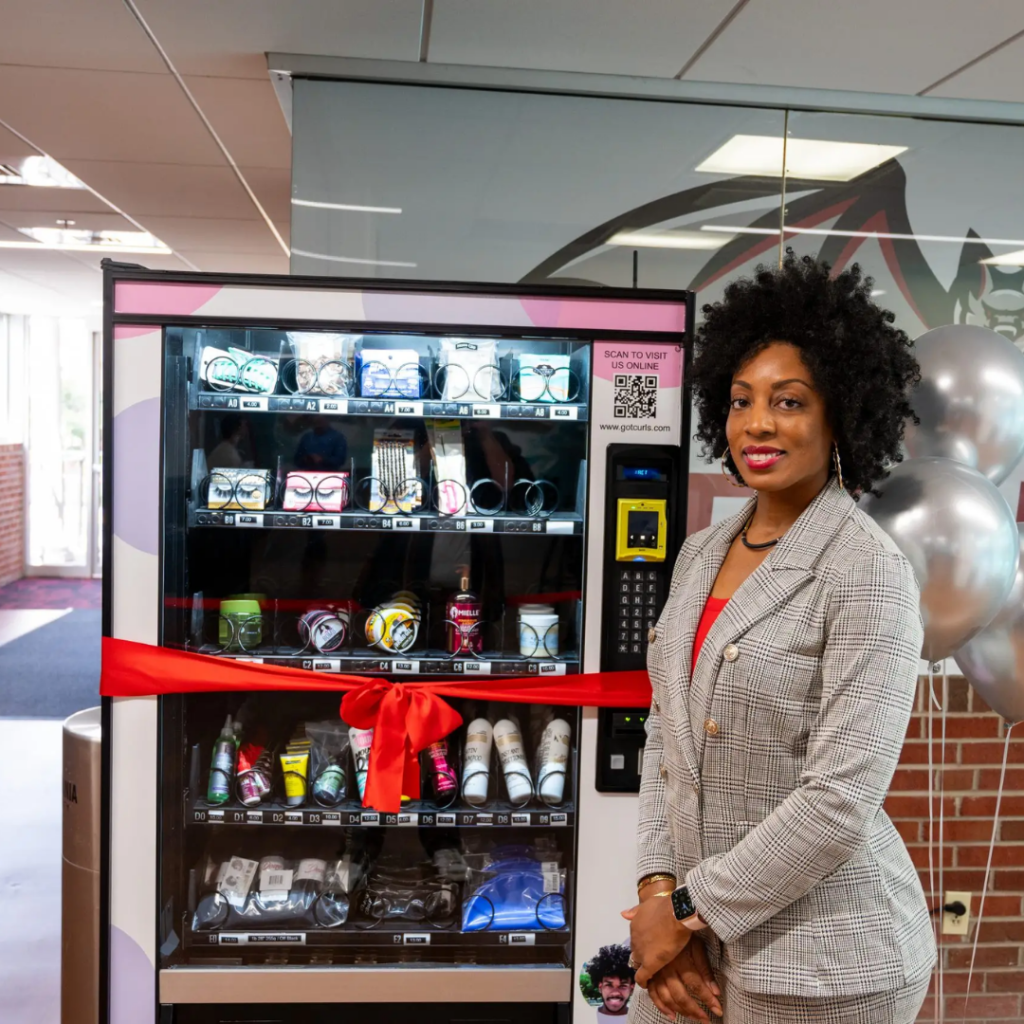Export ready American built machines in stock, shipping from Miami
What Is Medicine Vending Machine And How Smart Healthcare Access Works
A medicine vending machine is a self service automated dispenser designed to provide medical supplies, over the counter medicine, or healthcare essentials safely and efficiently. It is a growing segment of the vending industry, merging convenience technology with healthcare access. From hospitals to universities, these machines are reshaping how patients, staff, and the public access wellness items. They form part of a new generation of medicine vending machines and are often classified with modern new vending machines built for sensitive, high value inventory.
This guide explains what a medical vending machine is, how it works, the technology it uses, the best placement strategies, profitability considerations, and why it is becoming a core tool in healthcare automation in the United States.
Understanding The Purpose Of A Medicine Vending Machine
A medicine vending machine provides controlled, reliable, and convenient access to essential medical products without a staffed counter. These machines may offer pain relievers, cold and flu tablets, first aid supplies, hygiene products, or, in advanced configurations, prescription medication with secure authentication. They bridge the gap between pharmacies, clinics, and real time user needs, especially when full pharmacy service is not available.
Unlike traditional snack units, a medical vending machine prioritizes urgency, safety, and compliance. It helps users outside normal pharmacy hours and improves internal inventory workflows for hospitals and corporate health programs.
How A Medical Vending Machine Works
Although the front looks familiar, the internals are far more advanced. The system is built for safety, compliance, and transparent operations.
1. Inventory Management System
Sensors or RFID track each slot. Operators monitor stock levels, expiry dates, and lot numbers remotely. The software alerts the operator when a product runs low or nears expiry. This reduces waste and stockouts.
2. Temperature And Environment Control
Some medical items require stable temperature or humidity. A medical vending machine can include dual zone refrigeration, humidity management, and automated temperature logs for audits. These logs matter in hospitals and pharmacies that must pass inspections.
3. Payment And Access Control
Modern medicine vending machines support cashless payments, mobile wallets, and QR codes. Hospital models can also link to staff IDs or patient accounts. For regulated items, identity checks or prescription verification restrict access to authorized users.
4. Software And Connectivity
Connectivity is the backbone. Cloud dashboards support remote pricing, refunds, content updates, and alerts. Operators can predict demand, plan routes, and reduce downtime. Connectivity also enables predictive restocking powered by analytics.
Key Features Of Modern Medical Vending Machines
- Smart Inventory Control: RFID or weight sensors track quantity, movement, and expiry in real time.
- Temperature Regulation: Multi zone cooling maintains product stability and compliance.
- Secure Dispensing: Lockable drawers and sealed channels reduce tampering and contamination.
- Cashless And Mobile Payments: Contactless cards and digital wallets improve conversion.
- Data Analytics Dashboard: Usage patterns and peak times guide assortment and pricing.
- Compliance Tracking: Transaction logs support audits when required.
- Digital Displays: Health education, instructions, and optional sponsored content add value.
These features make medical machines adaptable across hospitals, campuses, hotels, and airports. They combine the reliability of new vending machines with the specialization of a medicine vending machine.
Types Of Medical Vending Machines
| Type | Description | Typical Use |
|---|---|---|
| OTC Vending Machine | Dispenses over the counter medicines such as pain relief, cold relief, or allergy tablets. | Universities, airports, hotels, and office buildings. |
| Pharmacy Vending Machine | Links to a pharmacy or telehealth workflow for secure prescription pickup and identity verification. | Hospitals, clinics, and remote areas without late night pharmacies. |
| PPE And First Aid Machine | Dispenses masks, gloves, bandages, and wound care kits. | Industrial sites, labs, warehouses, and public safety venues. |
| Employee Supply Machine | Automates internal distribution for staff items and medical kits, often at no cost to the user. | Hospitals, manufacturing plants, and corporate campuses. |
Ideal Placement Strategy
Placement is the strongest driver of engagement and profit. A well placed medical vending machine maximizes accessibility and trust.
Best Locations
- Hospitals And Clinics: Immediate access to OTC items and first aid when the pharmacy is closed.
- Universities And Dormitories: Self care items for students without a late night pharmacy nearby.
- Transportation Hubs: Airports and stations where travelers need fast, convenient health items.
- Corporate Offices: Health and safety programs that issue supplies to staff.
- Community Centers And Shelters: Public health access for wellness and hygiene products.
Placement Factors To Consider
- Measure daily foot traffic and profile the audience.
- Check power and network availability for smart functions.
- Confirm climate control if the machine includes refrigeration.
- Negotiate clear rent or commission terms with the property owner.
- Plan a consistent maintenance and restocking schedule.
Cost, Revenue, And Profitability
A medical vending machine costs more than a snack unit, but margins and long term value are often higher. A basic range for machines purpose built for medical use is roughly 6,000 to 12,000 dollars. Advanced pharmacy linked systems can exceed 15,000 dollars because they add secure access control and prescription handling features.
Cost Breakdown Example
| Expense Category | Estimated Range (USD) |
|---|---|
| Machine Purchase | 6,000 to 12,000 |
| Software And Connectivity | 30 to 100 per month |
| Initial Inventory | 1,000 to 2,500 |
| Maintenance And Repairs | 300 to 500 yearly |
| Placement Fee Or Commission | 10 to 20 percent of revenue |
Revenue And Profit
Gross revenue often ranges from 500 to 2,000 dollars per month per machine, based on traffic and relevance. Profit margins typically land between 25 and 45 percent after operating costs. Hospitals and airports tend to outperform small offices because urgency and convenience are higher. The three profit levers remain constant, location, product, and the right machine.
Technology Behind The Machines
Modern pharmacy vending machine designs sit on Internet of Things systems that connect hardware sensors, secure cloud software, and mobile communication. This creates a live view of sales, temperature, and inventory, which supports data driven decisions.
1. Hardware Components
- Commercial grade compressors and thermal insulation for consistent cooling.
- Adjustable shelves that fit a wide range of medical item sizes.
- Hardened locks, anti pry frames, and optional camera integration.
- HD touchscreen and clear lighting for instructions and product details.
2. Software Functions
- Cloud dashboards for price updates, content, and reporting.
- Auto reorder alerts and expiry tracking per SKU and lot number.
- Dynamic pricing features tied to demand, time, or promotions.
- APIs for identity checks and prescription validation when required.
3. Data Analytics For Operators
Analytics highlight top sellers, slow movers, and service issues. If a product sells out often, the operator can assign more columns to it. If an item lingers, the operator can replace it with a higher turn SKU. This is how a medical vending machine becomes a dependable profit point, not a passive fixture.
Compliance And Safety Standards
Operating a medical vending machine in the United States requires attention to several standards. The exact rules depend on what you dispense and where you operate.
- FDA Labeling And Storage: Items must be stored and labeled according to product requirements.
- HIPAA And Privacy: If personal data or prescriptions are handled, data must be protected and access controlled.
- Temperature Monitoring: Sensitive items require validated temperature ranges and recorded logs.
- ADA Accessibility: The machine and its interface should be accessible under ADA guidelines.
Choosing verified manufacturers and certified components reduces compliance risk. Many new vending machines built for healthcare already provide temperature logs, transaction logs, and secure access tools out of the box.
Advantages Of Medical Vending Machines
- Round the clock access to essential health products and medicine.
- Lower staffing need compared to a full pharmacy counter.
- Real time visibility of inventory and expiry dates.
- Flexible enough for hospitals, universities, offices, and travel hubs.
- Contactless transactions increase convenience and safety.
- Scales from one site to a national network with centralized control.
- Builds trust when placed with clear instructions and quality branding.
These advantages show why medical machines are standout medicine vending machines. They merge access, compliance, and economics in a single automated service.
Challenges And Risk Mitigation
1. Higher Initial Costs
Medical configurations cost more up front because of climate control, security, and compliance features. Leasing, revenue share, or hospital partnerships can smooth cash flow.
2. Regulatory Complexity
Rules vary by state and by product type. Some regions allow automated prescription pickup, others permit only over the counter items. Check local laws and align your process before deployment.
3. Technical Downtime
Downtime interrupts access and hurts trust. Preventive maintenance, redundant network options, and vendor support contracts help keep machines online. Smart alerts allow early detection of issues.
4. Product Expiry And Rotation
Medical products can expire faster than snack items. Use software that tracks expiry and trains staff to rotate stock first in, first out. Remove expired items promptly and document disposal.
Operator Playbook: From First Machine To Fleet
Phase One: Validation
- Pick one high traffic site and secure a fair commission or rent agreement.
- Install a machine with refrigeration if your product mix needs it.
- Start with a balanced mix of OTC essentials, first aid, and hygiene.
- Track daily sales and make weekly product swaps based on turn rate.</li>
Phase Two: Optimization
- Add digital display content that educates and promotes top sellers.
- Expand payment options, including mobile wallets and QR.
- Raise prices slightly on premium or convenience items when turn stays high.
- Test a second location with a different demographic, for example airport versus university.
Phase Three:
- Cluster machines within a short driving radius to cut service time.
- Use dashboards to plan restocks based on alerts, not fixed routes.
- Consider adding a pharmacy vending machine for prescription pickup where allowed.
- Negotiate multi site agreements with hospitals or campus systems.
Comparing Medical Vending And Traditional Vending
| Feature | Traditional Snack And Drink | Medical Or Pharmacy Vending |
|---|---|---|
| Product Type | Snacks and beverages | OTC medicine, first aid, PPE, sometimes prescriptions |
| Regulatory Burden | Low | Moderate to high, storage and records required |
| Machine Cost | Lower | Higher because of sensors, cooling, and security |
| Audience And Use Case | Impulse buyers | Need based buyers, emergency and after hours access |
| Technology Stack | Basic payment and motors | Telemetry, logs, temperature control, identity checks |
| Inventory Management | Simple | Complex, especially with expiry and recalls |
| Margin Potential | Moderate | Often higher with premium health products |
Future Outlook Of Medical And Pharmacy Vending
The next wave of medical vending machines will blend AI, computer vision, and telehealth. Cameras can confirm product selection, reduce misdispense events, and speed transactions. Remote pharmacists can authorize releases in real time for prescription pickups. Robotics can automate internal loading for high volume sites. Energy efficient designs and recyclable packaging will meet sustainability goals. Together, these shifts strengthen the case for medical vending as permanent healthcare infrastructure.
Conclusion
A pharmacy vending machine is more than a dispenser, it is a healthcare access point that provides essential products when people need them. In hospitals, campuses, travel hubs, and workplaces, it delivers a mix of safety, convenience, and control. As a leading example of medicine vending machines, it shows how automation can raise the standard of public health access.

